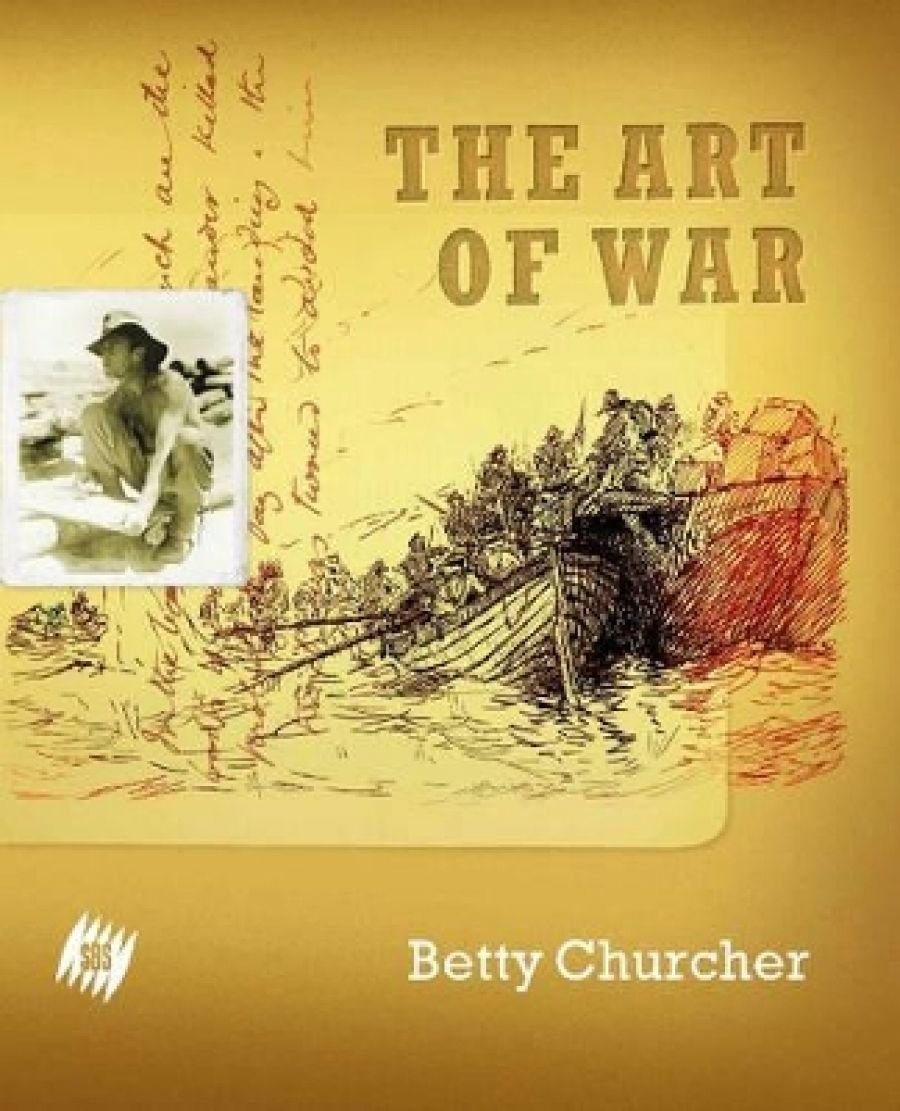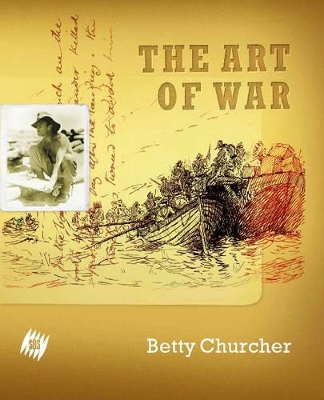
- Free Article: No
- Contents Category: Art
- Review Article: Yes
- Article Title: Good at Looking
- Online Only: No
- Custom Highlight Text:
The Art of War is published ‘to accompany the television series’ produced by Film Australia and to be broadcast on SBS. The television spin-off is an attractive genre for an art book. Writers have to keep to the point. There is a conventional picture-book formula, comprising a potted artist’s biography, a bit of art-historical placement and sometimes too little about what is specific to the work. Lola Wilkins’s Artists in Action: From the Collection of the Australian War Memorial (2003) is a good example. But a television producer knows that the words must concentrate upon the works we are staring at: forget the biography and the art history; just look at the art. Betty Churcher, like Sister Wendy, is very good at looking at works of art. For vivid specificity, take Colin Colahan’s striking Ballet of wind and rain (1945), men suddenly glimpsed leaning into the midwinter elements on a recently liberated airfield. Churcher suggests that it was so titled ‘perhaps because he has danced his brush across the canvas to simulate wild gusts but more likely because the four RAAF airmen duck their heads in unison like the cygnets in the dance from Swan Lake’.
- Book 1 Title: The Art of War
- Book 1 Biblio: Miegunyah Press, $39.95pb, 194pp
- Book 1 Cover Small (400 x 600):

- Book 1 Cover (800 x 1200):

The author dedicates the book to her father, William Dewar Cameron, and closes it with paintings by her son Peter Churcher. Such personalising devices usually work better in a television programme than in a book, but here the father sets the scene perfectly: ‘Gassed 25 August 1917 … classified TPI (totally and permanently incapacitated) ... [He] never discussed the war. Everything turned out to be repugnant yet there could have been no more ardent young recruit.’
We see commemorative heroics in elaborate Gallipoli and Palestine battle-piece paintings by George W. Lambert, and in Libya and New Guinea paintings by lvor Hele; these help the once ardent recruits to feel honoured and appreciated. We also see plenty of on-the-spot ‘rotting corpses and dysentery and the dull, heavy pull of mud’; these speak for the shattered souls, lest we forget their terrible truths. Discovery of cannibalism in a Japanese hide-out, a direct sketch made by Hele on official war artist duty for the Australian War Memorial in 1944, is illustrated beside the painting he developed from it three years later, back home in his studio in Adelaide. Alongside it is another dreadful sketch, Shooting wounded Japanese. Hele’s ‘dark pictures’ caused him to struggle with depression.
There has never been such an even-handed and powerful selection of Australia’s art of war. There are the highly professional sketches and compositions intended for public edification. There are also private, amateur drawings and photographs from the trenches of Flanders, and (most shocking of all) architect Bernard Slawik’s angry records of life in a Nazi concentration camp, hidden away on little scraps of paper, brought to Australia and never shown to his family.
Significant details pour forth from Churcher. She finds that Lambert did his research very carefully during a site visit in 1919 for his huge Anzac, the landing, 1915 (1920-22): out to study pre-dawn light; got a trooper to pose as a corpse in the right uniform, on the right soil among the right spiky shrubs. She notes how Hele sometimes made his soldiers’ faces more appropriately haggard in the paintings than the sketches, whereas their bodies are sometimes beautified into poses taken from Michelangelo and Italian Mannerism.
I wish Churcher had ventured out from museum collections of pictures into the world of public art and also included the great state Anzac shrines, the ubiquitous civic digger statues and the humbler honour boards in parish churches. Ken Inglis’s Sacred Places: War Memorials in the Australian Landscape (1998) might be familiar. Here I recommend Lisanne Gibson and Joanne Besley’s Monumental Queensland (2004) for its reminder of Daphne Mayo’s wonderful 1932 sculptures in Anzac Square, Brisbane, which was Churcher’s home town.
Miegunyah has failed to produce a book worthy of Churcher’s picture-anthology and text. It is not buyer-friendly, art-friendly or reader-friendly. There is no subtitle to tell buyers that it is about Australian war art since 1914 (the title suggests the whole world and all time); the cover design is unobtrusive and will not attract attention; and the enthralling pictures are reproduced in muddied yellow colour. Readers will be confused by the badly done magazine-style layout, with lots of breakouts on creamy grounds that cataracted eyes will hate, and with pictures separated from their mentions in the text. Most confusing is the absence of owner credits for the works of art. A foreword by the director of the Australian War Memorial gives the casual reader the impression that all the pictures are his, whereas a substantial minority comes from elsewhere. Readers of art books want picture captions that tell them where to go to see the originals. They do not need the four-line overkill of medium descriptions such as ‘pen and ink, brush and wash on paper mounted on card, sheet: 26 x 38.8 cm, Image: 25.6 x 37.6 cm’. A laborious search at the back offers the names of copyright holders, not necessarily the names of owners. One of the welcome handful of foreign works illustrated as sources for Angry Penguins artists such as Albert Tucker is Max Beckmann’s expressionist Night (1918), and it lacks even a copyright acknowledgment.


Comments powered by CComment